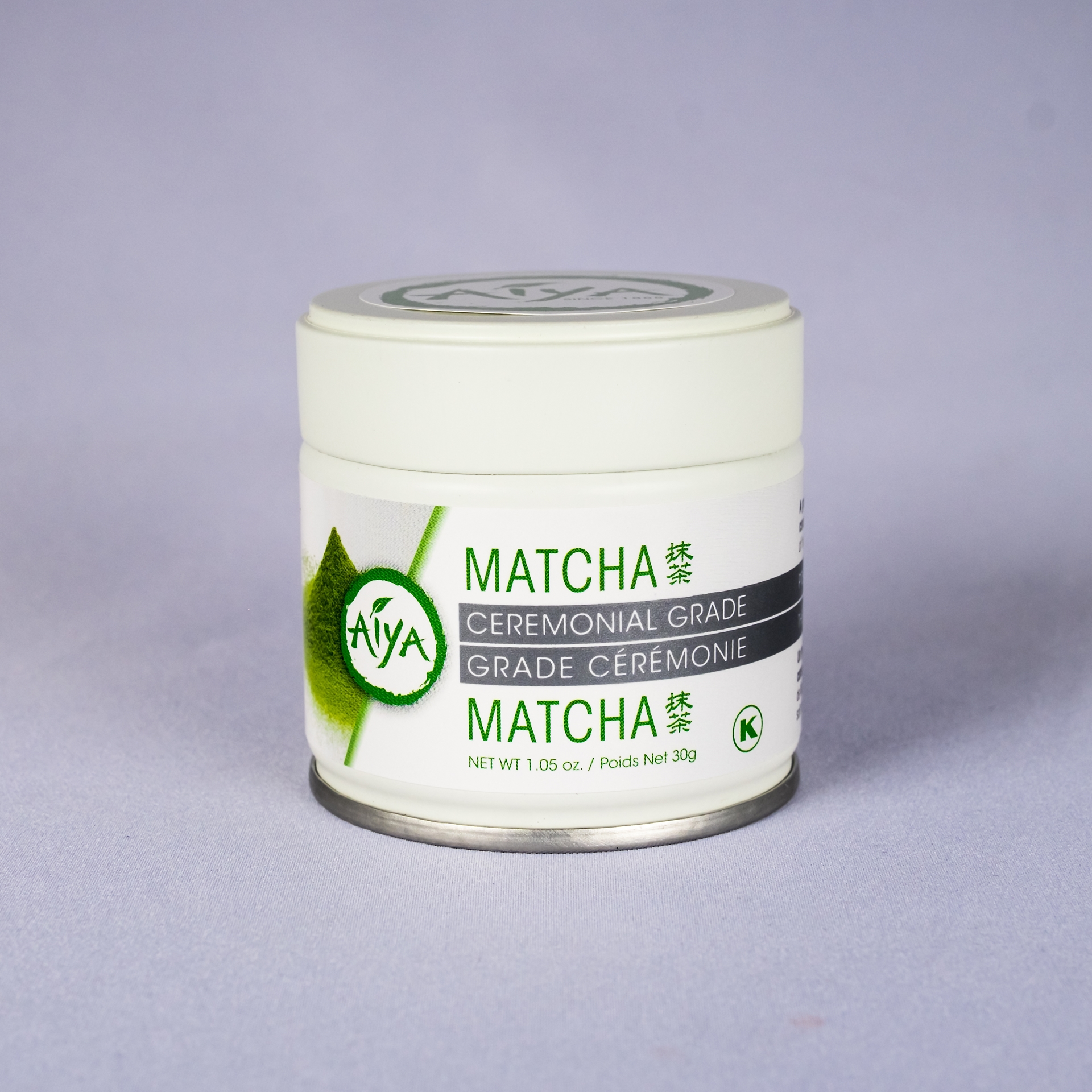

Instead, whisk vigorously from side to side – either directly back and forth or in a zigzag pattern – to evenly disperse the powder in the water and create a foamy layer on top. Then, pour in a small amount of hot water, and whisk. But wait! This isn’t the circular whisking required for making baking recipes or scrambled eggs. Otherwise, it will be difficult to get the tea to disperse evenly in the liquid, and your drink will be lumpy. Matcha clumps very easily, so I always recommend sifting it before you add any water. Here’s what you need to do:įirst, sift it into a small bowl or mug.
Matcha aiya full#
You’ll find my full matcha green tea recipe and measurements below, but because there are a few tricks to making matcha, I wanted to break it down step by step. You also might want to sweeten your tea if your matcha powder is particularly bitter. If you’re new to making it, don’t hesitate to add a few drops of maple syrup or honey.


Whisking or stirring with a fork or spoon will not work here. If you don’t have one, use a regular whisk or an electric milk frother instead. Its special design breaks up clumps and creates a frothy layer of foam on top of the tea. You might want a matcha whisk. If you make matcha often, I recommend investing in a bamboo whisk called a chasen (pictured here).I recommend buying it in small quantities and storing it in the fridge to preserve freshness. Once you open it, use it within 2 months for the best color and flavor. It doesn’t last forever. Matcha doesn’t have a particularly long shelf life.My go-to choice is Aiya – it’s great quality, but it’s still affordable. Its flavor is more bitter, which balances well in lattes or desserts. Otherwise, less expensive culinary matcha should do the trick. Choose it if you plan to drink your matcha with just water. The ceremonial kind will be pricier – it’s made from the youngest tea leaves and has a mellow flavor. Beyond that, the most significant distinction is between ceremonial and culinary grade matcha. I always advocate looking for one with no added sugar. Buying matcha for the first time can be confusing – there are so many brands, and they vary widely in quality. It leaves me feeling energized and focused, but still calm. So what about caffeine? Well, matcha does contain more caffeine than regular green tea, but it doesn’t give you a buzzy rush like coffee. As a result, you actually consume the entire tea leaf when you drink it! The antioxidants it contains may lower blood pressure, reduce your risk of heart disease, and even boost your metabolism. When you make matcha, you whisk the powder into hot water or milk. Here’s why: when you make other forms of green tea, you steep the leaves in hot water and then discard them. Regular green tea is already touted as an antioxidant powerhouse, but matcha has even more benefits. It’s been the cornerstone of traditional Japanese tea ceremonies for centuries, but it recently became popular in the US because of its health benefits. It has a slightly bitter, vegetal taste and a vibrant green color that results from the leaves’ high chlorophyll levels. If you’re not familiar with matcha, it’s a Japanese green tea powder made from finely powdered dried tea leaves. It’s energizing and calming both at once, and above all else, it’s delicious.

To me, it’s the perfect way to start the day. I’ve loved drinking matcha this way since Jack and I took our first trip to Japan years ago, and I still make myself a cup almost every morning. While I’ll never say no to a matcha doughnut, today I want to focus on the simplest way to enjoy it: by whisking it into hot water to create a frothy, nourishing tea. A few years ago, matcha started popping up everywhere – in lattes, ice cream, smoothies, icing, and more.


 0 kommentar(er)
0 kommentar(er)
